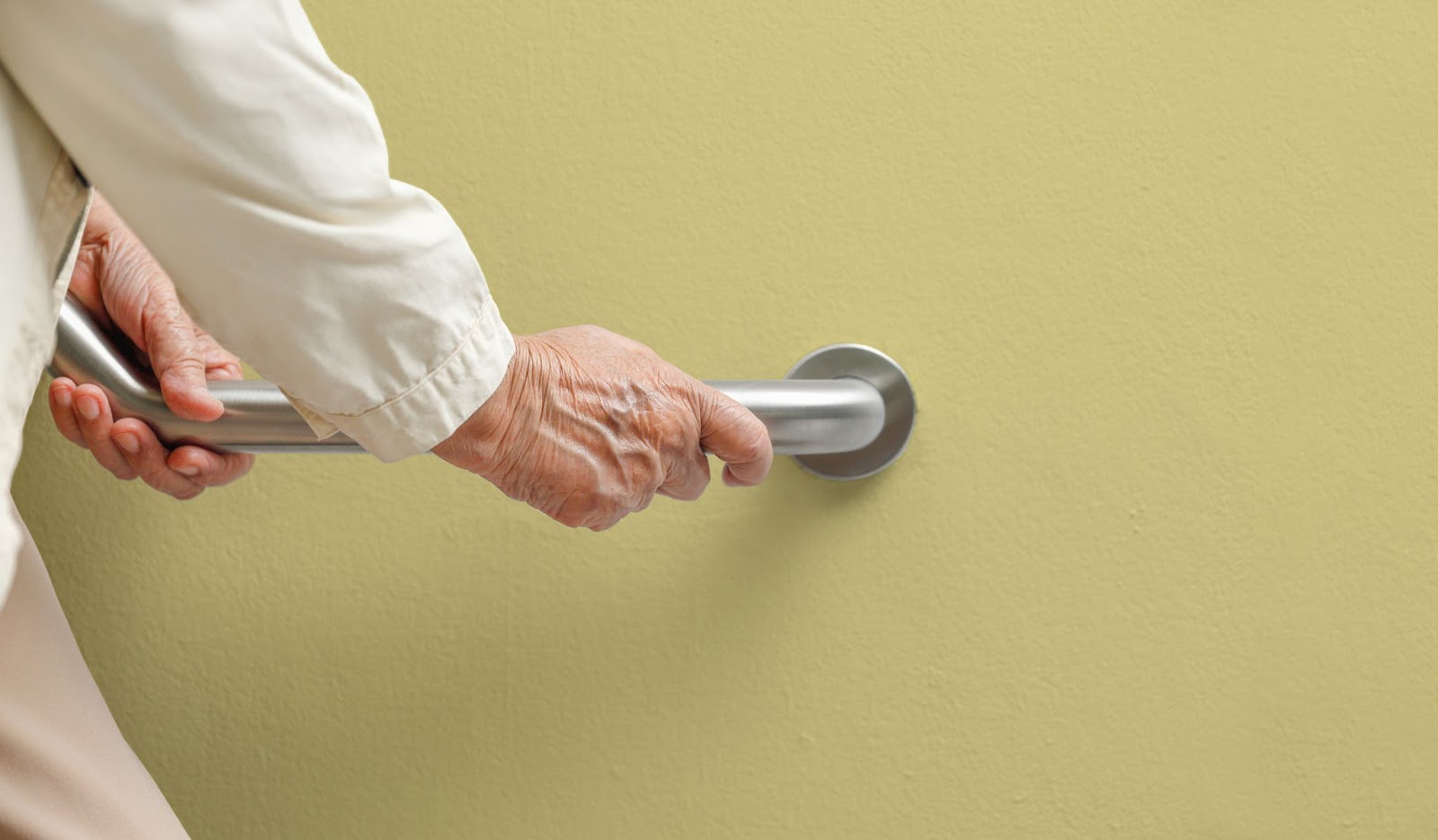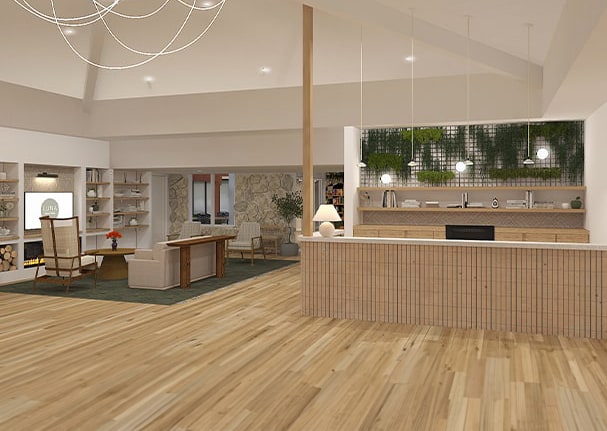Everyone trips or stumbles sometimes. However, our sense of balance shifts as we age, even with good health and regular balance practice. Having a grab bar (a safety device designed to help maintain balance while standing) or 2 in the home can be an important aspect of maintaining peace of mind in your home.
While the best grab bar for your specific living situation and unique needs and abilities may vary, wall-mounted straight grab bars that can support your weight installed in showers and bathtubs are the most widely recommended. This simple preventive home improvement implementation is a big safeguard against accidental slips and falls.
Types of Grab Bars
Wall-Mounted Grab Bar
Wall-mounted grab bars are the most common type of grab bar—you’ve probably seen one in a public bathroom. They are securely installed to a wall with mounting screws and anchors, making them a stable support system.
However, it’s recommended to have one installed by a professional handyman or contractor to ensure the grab bar is mounted correctly, so it doesn’t accidentally come loose.
Bathtub-Mounted Grab Bar
As the name suggests, this grab bar is meant specifically for bathtubs, with adjustable clamps to fit tightly over the rim of the bathtub. This provides stability while maneuvering in and around the tub, but only works on bathtubs that have rims on either side to clamp onto.
Suction Grab Bar
These types of grab bars attach to the wall using a simple suction cup method on either end. They’re most helpful as a temporary measure (such as while recovering from an injury or surgery, or when travelling) since they are generally not intended to support your full body weight.
If using a suction grab bar, make sure to regularly check the suction, as it may loosen over time. Additionally, only install them on non-porous surfaces like tile.
Folding Grab Bars
Folding grab bars can either flip up or fold down when not in use to save space in tight areas. This can be particularly helpful if your living space is smaller or when installed near a toilet or sink.
Free-Standing/Floor-to-Ceiling Grab Bars
Free-standing and floor-to-ceiling are names used interchangeably for grab bars that are adjustable in height and are secured between the floor and ceiling. This provides support throughout an entire vertical space, not just around an object like a bathtub.
These grab bars are most useful in areas without walls (like open-concept spaces), spots you may need help sitting down and standing up (like a couch or a toilet), or for entering or exiting spaces (like getting in and out of the tub/shower or at the top/bottom of a set of stairs).
What makes these grab bars extra special is their customization capacity, allowing for additional features like adjustable hand grips or multiple attachment points.
Grab Bars Styles
While most grab bars are made of either steel, aluminum, or other metals, 4 key styles can impact their grip and texture—which play crucial roles in providing something to hold onto.
- Straight Grab Bars: Typically smooth with standard non-slip texture
- Wave Grab Bars: Have a slight-to-pronounced curvature that offers more decorative style than other options
- Textured Grab Bars: Made with textured materials (often plastic, high-density resin, or polyethylene) to feature grooves or ridges to add additional friction for gripping
- 2-in-1 Grab Bars: Any grab bar that serves a secondary purpose on top of being a grab bar, such as a toilet paper holder or towel rack
Regardless of style, standard grab bars have a weight capacity of 250 pounds, with many available options that have weight capacities over 300 pounds. Whatever style speaks to you, ensure to double-check that your grab bar meets this weight standard for reliable and safe long-term use.
Placement for Grab Bars
Grab bars are most commonly found in showers and bathtubs—and for good reason, since approximately 80% of all bathroom injuries are caused by falls. Installing grab bars around showers, bathtubs, and toilets can be a priority, but they’re not the only place where grab bars are useful.
- Staircases & Steps: While most staircases come with handrails, they often can’t provide the additional support needed at either the top or bottom of the staircase, especially for threshold steps.
- Entryways and Hallways: This can be especially beneficial for longer hallways or ones decorated with rugs that could be tripped over.
- Living Rooms: For that little extra support when sitting down or standing up from chairs or sofas.
- Bedroom: Particularly helpful for getting in and out of bed; double-so if it’s the middle of the night and you’re trying not to disturb your partner.
Which Grab Bar Should I Get?
Assess the unique needs you have in your living environment and what your budget is. Do you get tired walking down the hallway? Feel a little uneasy getting out of the tub? How much do you weigh functionality and aesthetics against each other?
A grab bar that complements your individual needs and abilities can make a marked improvement in the safety of your living situation. However, a grab bar is just one piece of a very large puzzle that is managing your health while embracing the things that make you excited about life.
If you’re worried about the safety of your home and fear hiring a professional to install grab bars in your home may be too much for you, consider booking a tour with us to see what Luna Senior Living has to offer.




















